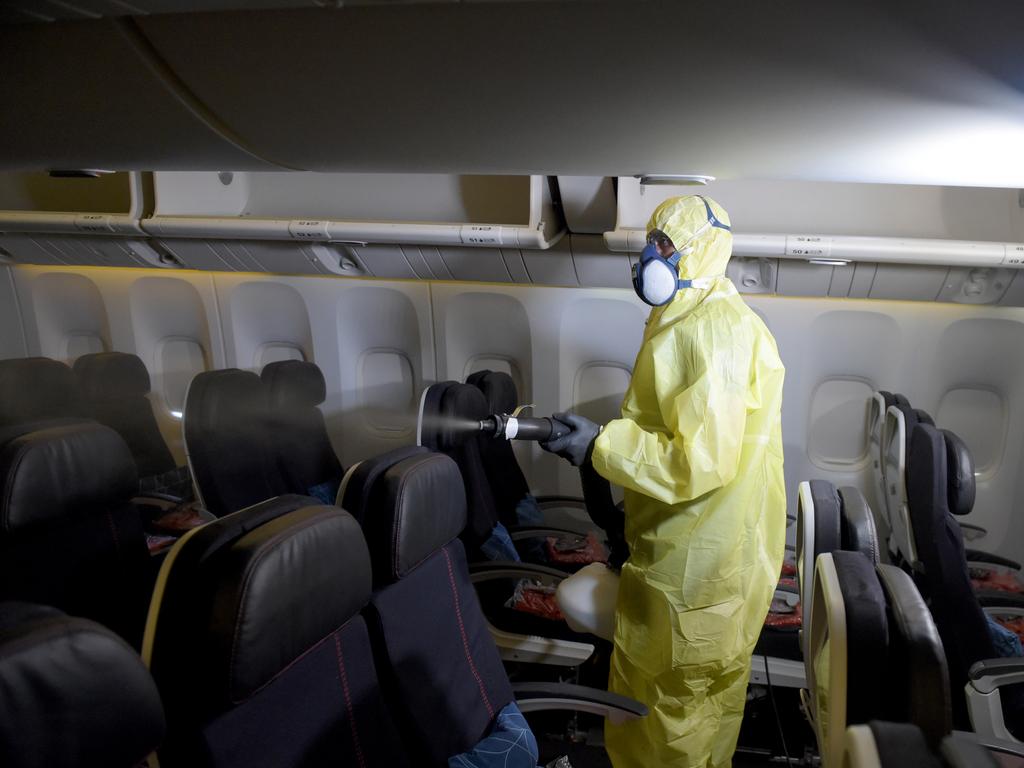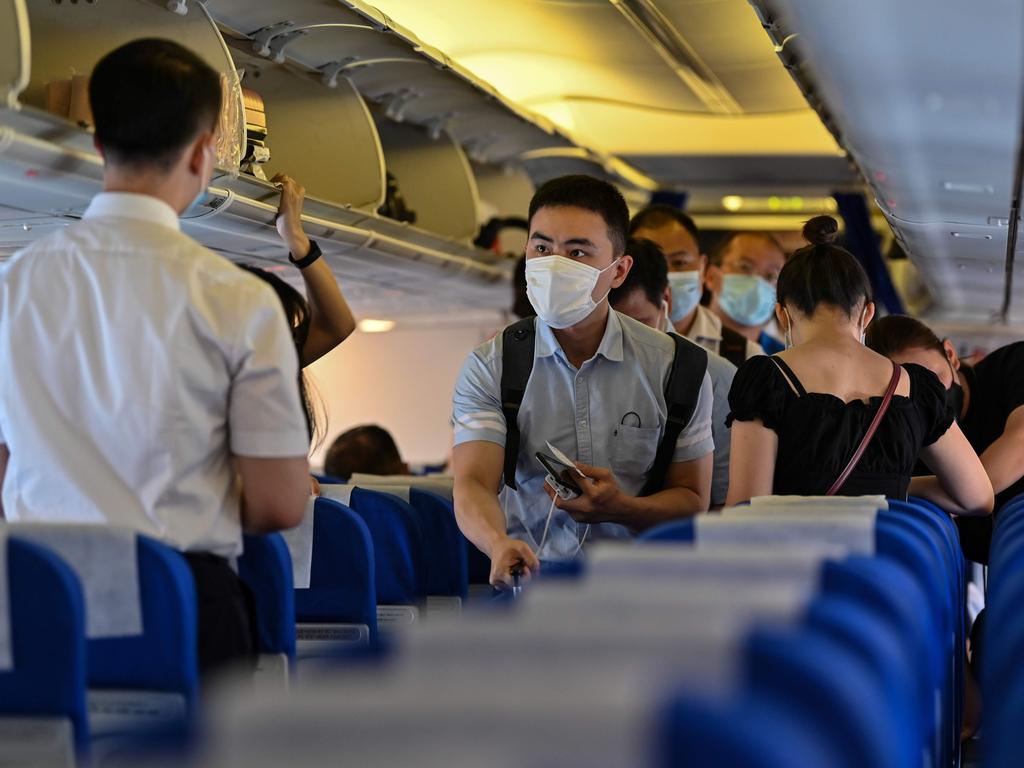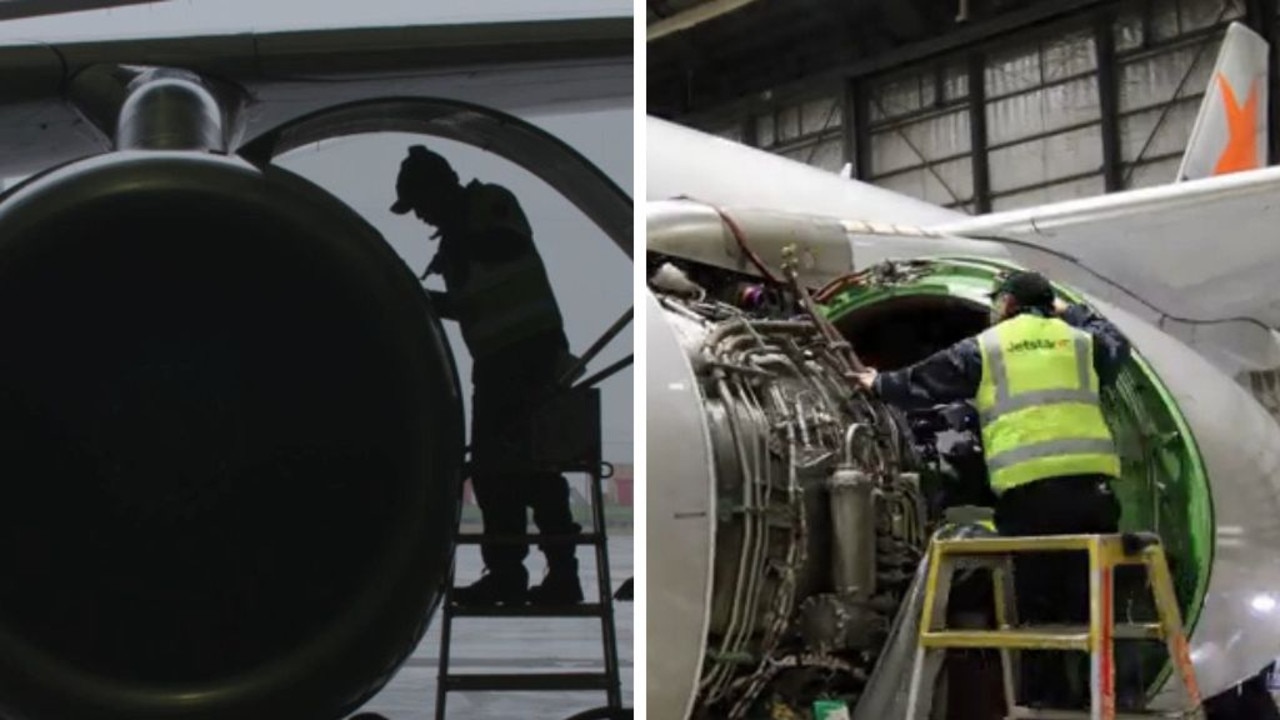What is the risk of catching coronavirus infection while flying?
As more of us start booking flights again, there’s concern about catching COVID during a flight. But experts say that’s not the part to worry about.
As Australian states gradually lift border restrictions, and airlines return planes to the sky, more of us are taking to the skies — often for the first time in months.
But whether it’s now, as we jet from one domestic destination to another, or eventually, when international borders reopen and we fly long-haul again, the top concern for travellers is and will be: is it safe?
RELATED: What it’s really like flying during a pandemic
Airlines have been forced to take drastic measures to reduce the risk of COVID-19 on aircraft and reassure travellers of their safety in the air.
Some airlines have blocked out middle seats for social distancing and others have made it mandatory for passengers to wear masks — and in the case of Qatar Airways, plastic face shields as well.
RELATED: Aussie model details ‘scary’ international flight
Virgin Australia and Qantas haven’t taken those approaches, but they have started offering free face masks and hand sanitiser, rethought the boarding and deplaning process, adjusted catering and radically stepped up cleaning and sanitising on planes to reduce the risk of transmission.

While there have been notable cases linked to flights — a Jetstar flight was flagged just yesterday for having a confirmed case on board — globally, there are few known cases of COVID transmission inside aircraft, The Wall Street Journal reports.
According to an International Air Travel Association report, cited by the Journal, a March 31 flight between the United States and Taiwan had 12 symptomatic passengers, but contact tracing found there was no on-board transmission among the 328 other passengers.
Similarly, a symptomatic passenger infected no one on a China to Canada flight.
However, it does happen — on a London to Vietnam flight on March 2, 14 people were likely infected by one person sitting nearby.
HOW COULD THE VIRUS SPREAD IN THE CABIN?
COVID-19 spreads from droplets from an infected person that are ingested through the mouth, nose and ears.
Ventilation systems on planes are believed to be very good at controlling the spread of small aerosol particles.
The air we breathe in the plane cabin is a 50-50 mix of outside air and recirculated air from inside the cabin, which has passed through hospital-grade HEPA filters that can remove at least 99.9 per cent of bacteria and virus particles.

The air on the plane may be completely replaced every 2-3 minutes, compared with every 10-12 minutes in an airconditioned building, the BBC reported.
“It is generally accepted right now that when the plane is in flight and the ventilation system is up and running, it does a really good job of clearing the air of infectious particles,” disease transmission expert Dr Mark Gendreau told the Journal.
But the ventilation systems are less effective with handling large droplets, so experts believe the bigger risk on planes is from passengers coughing and sneezing nearby.
That’s why masks can be important, and why some experts believe the window seat — which offers less exposure to other people — is the best place to avoid those large droplets.
BIGGEST RISK IS NOT NECESSARILY IN-FLIGHT
A German study found it’s not necessarily during the flight, when the ventilation systems are up and running, where COVID-19 is likely to spread.
Computer simulations found it was actually during boarding and deplaning when passengers were most at risk, the Journal reported.
That’s when passengers are in even closer contact — queuing in aisles, looking for seats, and moving bags in and out of the overhead compartment.

Airlines have changed their boarding and deplaning process to maintain some level of physical distancing. Virgin Australia, for example, boards passenger in smaller sections and on arrival, passengers are asked to remain in their seats so the plane can be emptied row by row.
Boeing has issued an advisory — which airlines don’t have to follow — that on-board power is used to keep ventilation systems running at full strength during boarding and deplaning.
Some airlines choose to do this anyway, while others don’t.
The other key thing for passengers to remember is how easily the virus can be stopped through simple hygiene habits.
“Contrary to what people think, the hands are the way that these viruses most efficiently spread,” Dr David Powell, medical adviser of the International Air Transport Association, told Bloomberg.
“Top of the list is frequent hand washing, hand sanitising, or both.”



